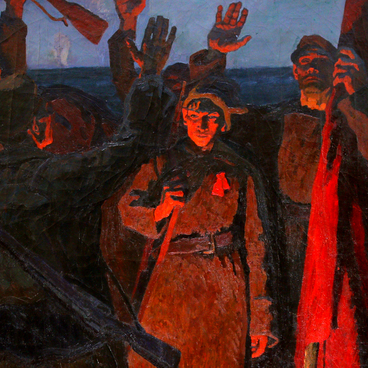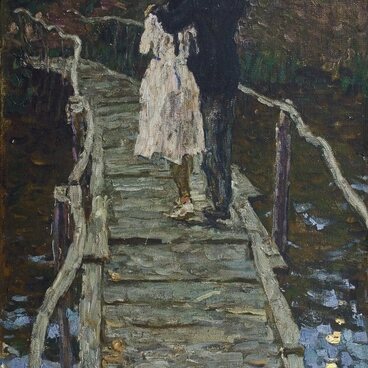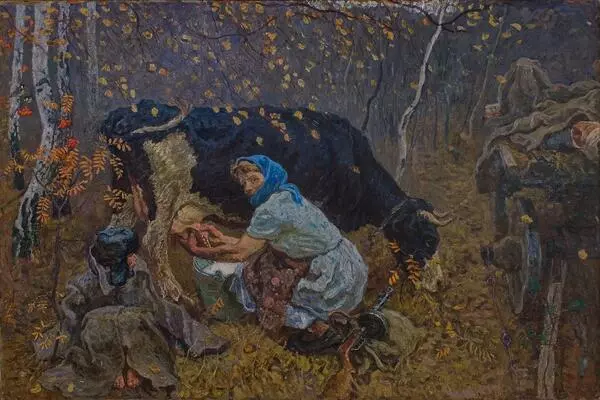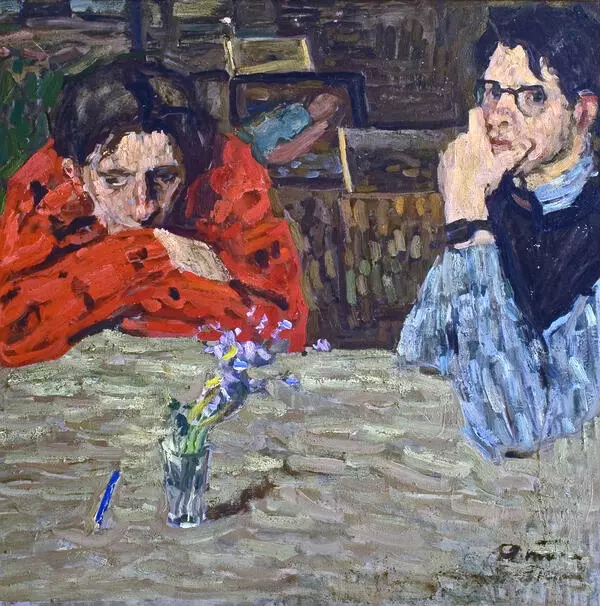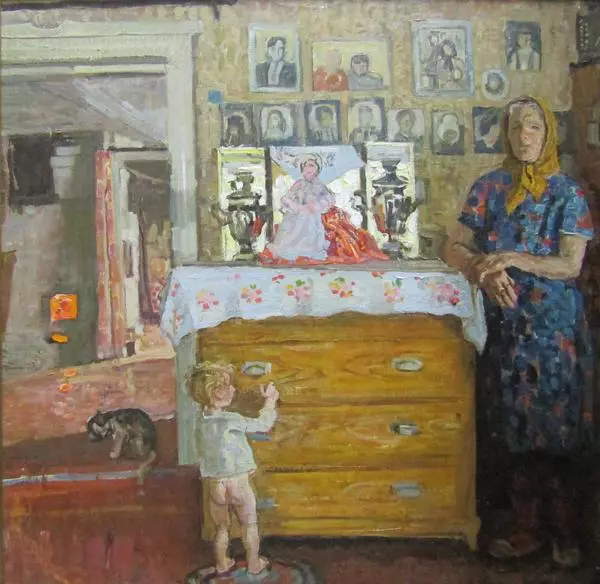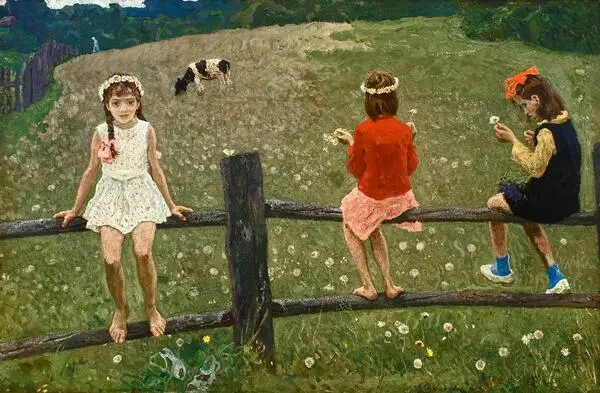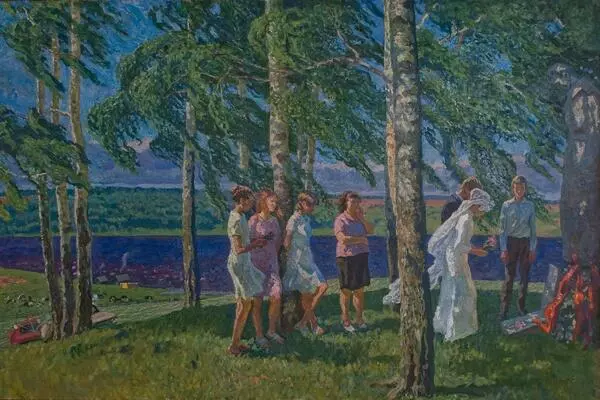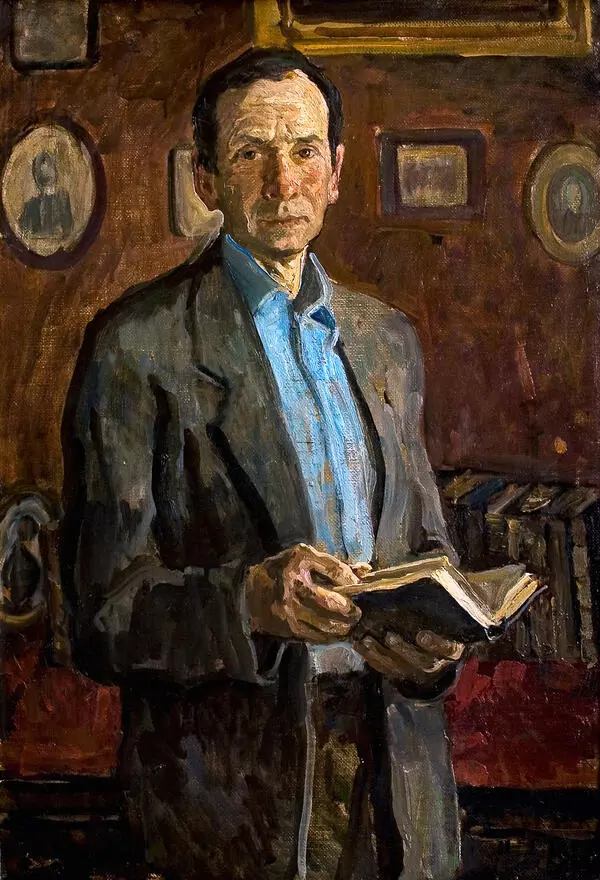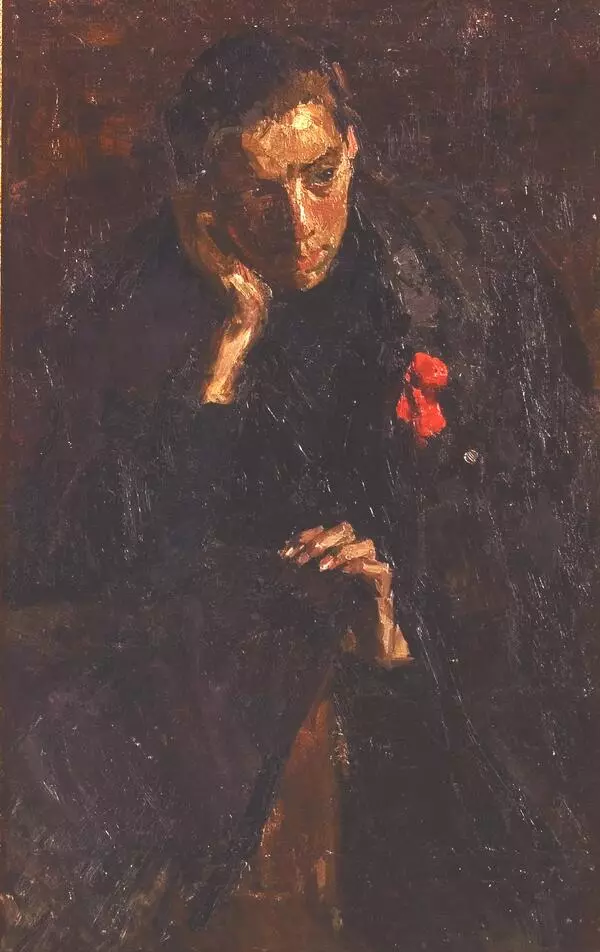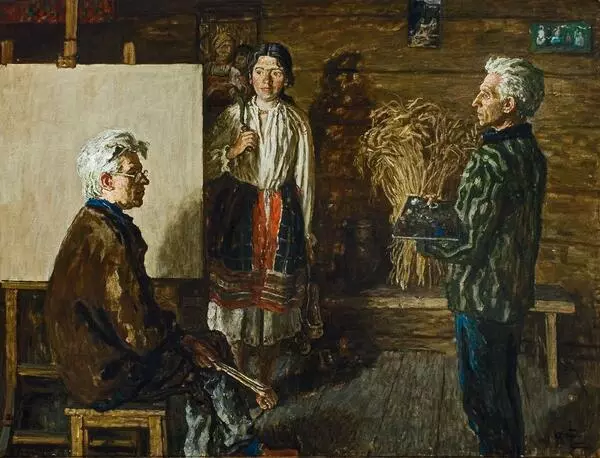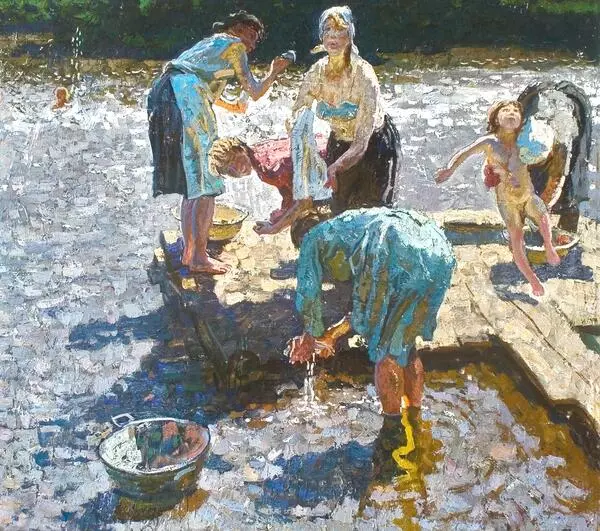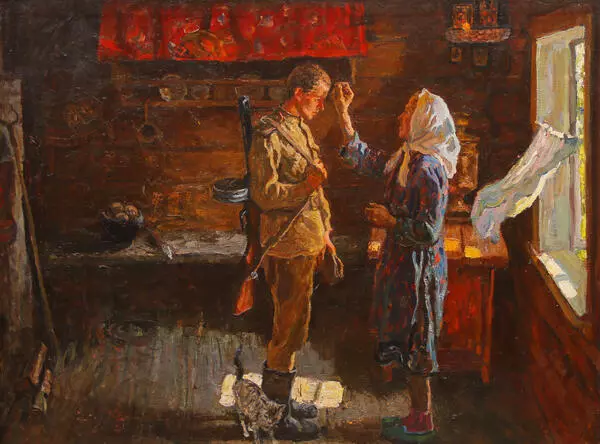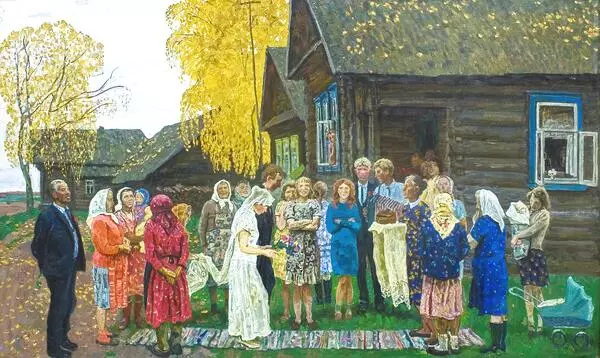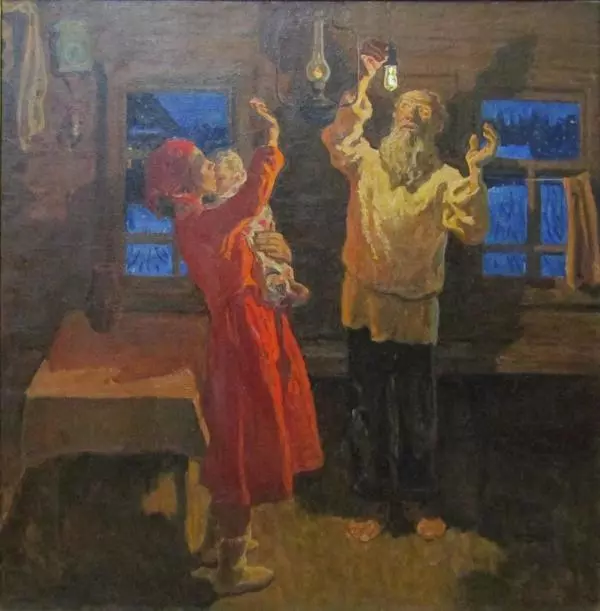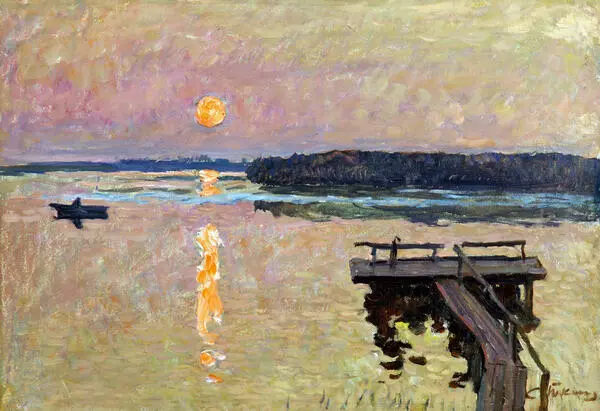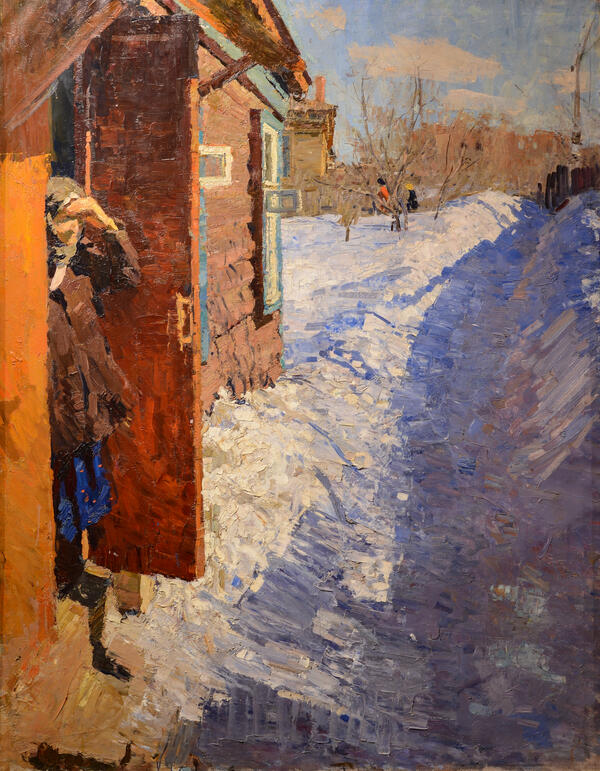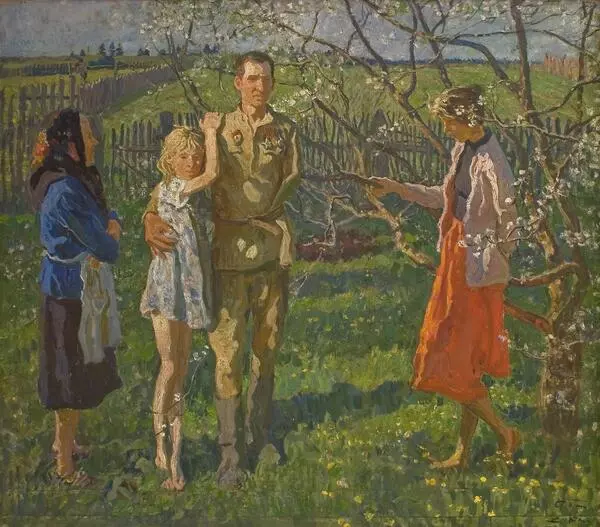Sergei and Alexei Tkachyov completed their portrait of veteran of the Great Patriotic War, the author Ivan Afanasievich Vasiliev in 1991. They portray the soldier in his own village, amongst his books and favorite objects. On the right of the veteran is his Order of the Great Patriotic War, second class. It was awarded to soldiers who distinguished themselves in battle with the invaders. After the war, Ivan Vasiliev became a writer and wrote a multitude of short stories and novels. On top of this, he worked as a teacher and wrote journalistic essays for newspapers in the countryside. The brothers had read his articles in the Russian publications of ‘Soviet Russia’ and ‘Country Life’ long before meeting him in person.
They eventually met in summer 1988. The Tkachyov brothers visited Ivan Vasiliev’s house in Borki along with artist Valentin Sidorov. As the brothers later recounted, the writer was always close to them in spirit.
They eventually met in summer 1988. The Tkachyov brothers visited Ivan Vasiliev’s house in Borki along with artist Valentin Sidorov. As the brothers later recounted, the writer was always close to them in spirit.
He remained a man of business, never stooping to unsubstantiated bragging. They were also intrigued by his flamboyant appearance - it was immediately clear from his appearance that the veteran was a Russian intellectual, who heralded from the common people.
The first study for the portrait was developed in Borki, at Ivan Vasiliev’s home. He sat for three three-hour sessions. Work continued in Moscow, with the artists opting for a large canvas. Ivan Vasiliev often visited the artists in their Moscow studio. He would even occasionally spend a few days there, and when he was able, he would happily sit for his portrait. He would sit in the same pose as he had done in Borki, with a cigarette in his hand. The artists recall that the veteran was a marvelous companion. The men often spoke about the war, about the fate of the Russian village and about modern life.
Ivan Vasiliev never meddled in the creative process, well aware that one ill-considered word could throw a spanner in the works. When the portrait was completed, the veteran looked at it closely and said, ‘I’m here, like the devil from hell! ’ Then moving to a more serious tone, he remarked that would not comment on the quality of the painting, as he was not a specialist in that field. He did note, however, that seeing his familiar home environment recreated on canvas made him very happy.
The first study for the portrait was developed in Borki, at Ivan Vasiliev’s home. He sat for three three-hour sessions. Work continued in Moscow, with the artists opting for a large canvas. Ivan Vasiliev often visited the artists in their Moscow studio. He would even occasionally spend a few days there, and when he was able, he would happily sit for his portrait. He would sit in the same pose as he had done in Borki, with a cigarette in his hand. The artists recall that the veteran was a marvelous companion. The men often spoke about the war, about the fate of the Russian village and about modern life.
Ivan Vasiliev never meddled in the creative process, well aware that one ill-considered word could throw a spanner in the works. When the portrait was completed, the veteran looked at it closely and said, ‘I’m here, like the devil from hell! ’ Then moving to a more serious tone, he remarked that would not comment on the quality of the painting, as he was not a specialist in that field. He did note, however, that seeing his familiar home environment recreated on canvas made him very happy.
